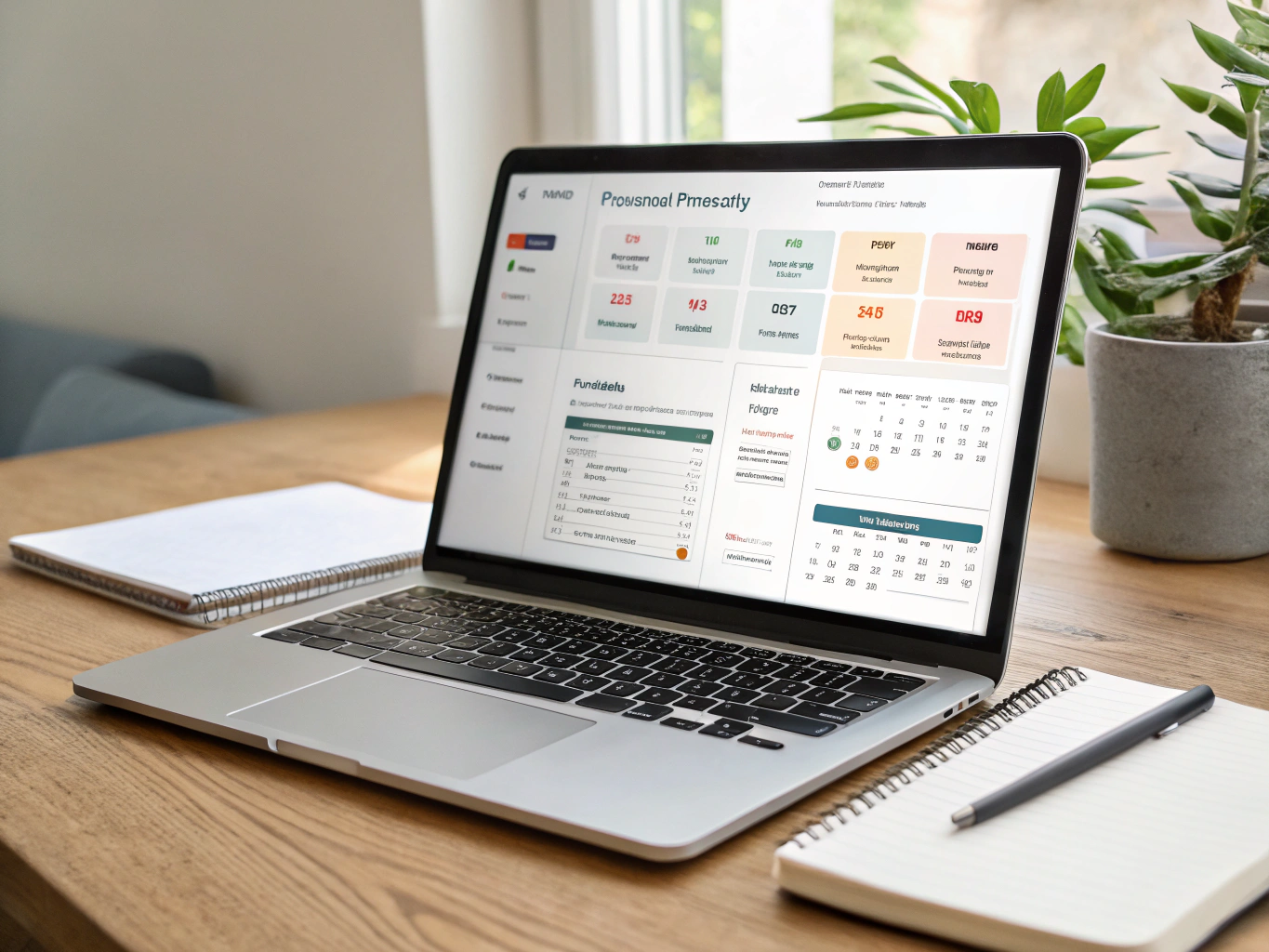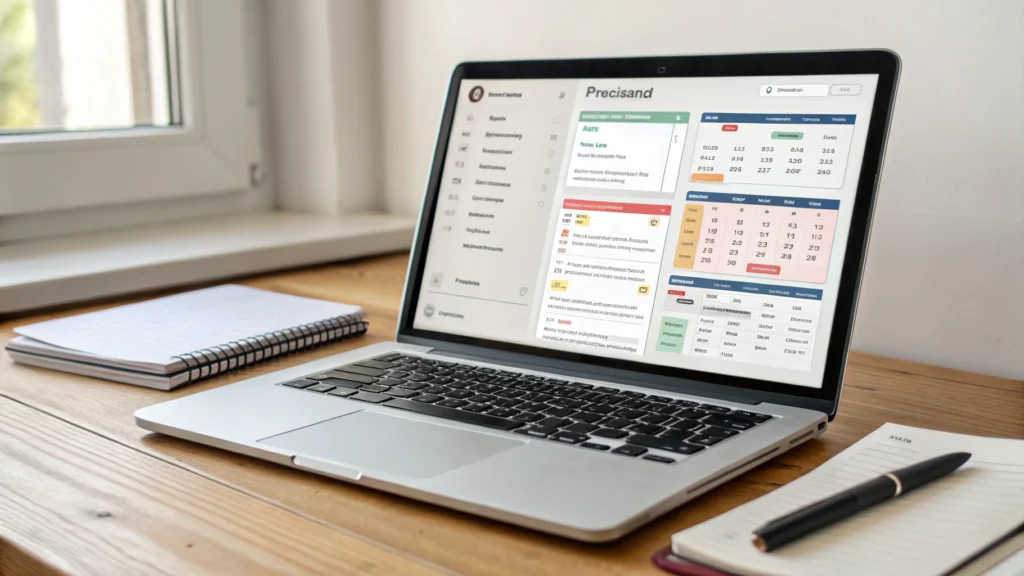Personal Productivity Program: How to Boost Focus in 2025
In 2025, the battle for our attention is more intense than ever. With endless notifications and digital distractions, developing a robust
>personal productivity program isn't just helpful – it's essential for survival.
I've spent years testing productivity systems that actually work in real-world scenarios. What I've discovered is that boosting focus isn't about working harder – it's about working smarter with intentional systems.
Let's break down exactly how to create a personal productivity program that will dramatically improve your focus in 2025.
Why Traditional Productivity Advice Fails in 2025
Most productivity tips you find online are outdated. They were created for a world without AI assistants, constant social media, and the attention economy.
In 2025, we need systems that acknowledge our digital reality while protecting our most valuable resource: focused attention.
The latest research shows that our attention span continues to fragment. The average knowledge worker now switches tasks every 3 minutes – down from 6 minutes just five years ago.
The Core Components of an Effective Personal Productivity Program
A truly effective
>productivity program needs five key elements:
- Focus infrastructure
- Energy management (not just time management)
- Decision minimization
- Technology integration
- Consistent review systems
Let's dive deeper into each component.
Building Your Focus Infrastructure
Your environment shapes your behavior more than willpower ever will.
Start by designing physical and digital spaces that eliminate friction for focused work:
- Create a dedicated focus zone with minimal visual distractions
- Use noise-canceling headphones or ambient sound generators
- Install website blockers during deep work sessions
- Set up focus modes on all devices that silence notifications
- Implement the "touch it once" principle for emails and messages
The goal isn't perfection – it's creating enough barriers against distraction that your default state becomes focus.
Energy Management: The Missing Piece
Most productivity systems obsess over managing time but ignore managing energy.
Here's what I've learned: an hour of work when you're mentally fresh is worth three hours when you're depleted.
Smart
>time management strategies for 2025 include:
- Track your energy levels for two weeks to identify your natural peaks
- Schedule your most demanding cognitive tasks during peak energy hours
- Use the 90-minute work block method (based on natural ultradian rhythms)
- Incorporate strategic breaks with physical movement
- Prioritize sleep as your productivity foundation

Decision Minimization: Preserve Mental Bandwidth
Decision fatigue is real. Each decision depletes your mental resources.
To
>boost focus in 2025, systematically eliminate unnecessary decisions:
- Create decision templates for recurring choices
- Establish personal policies (e.g., "I don't take meetings before 10 AM")
- Pre-plan your week on Sunday evenings
- Automate meal planning and wardrobe choices
- Use the 5-minute rule: if a task takes less than 5 minutes, do it immediately
The fewer decisions you make daily, the more mental bandwidth remains for focused work.
Technology Integration: AI as Your Productivity Partner
In 2025, productivity technology has evolved dramatically. The key is using tools that enhance focus rather than fragment it.
Essential technology components for your
>personal productivity system:
- AI task managers that prioritize based on your energy patterns
- Knowledge management systems that externalize information
- Digital minimalism protocols (fewer apps, each serving specific purposes)
- Focus enhancement apps that use neuroscience-backed techniques
- Automated documentation and process capture tools
For an in-depth guide on leveraging AI for extraordinary productivity gains, check out the
>AI for Productivity eBook + Checklist: Supercharge Your Efficiency in 2026.
Consistent Review Systems: The Key to Continual Improvement
The most powerful productivity systems have built-in reflection mechanisms.
Implement these review habits:
- Daily shutdown ritual (5 minutes to close open loops)
- Weekly review (what worked/didn't, upcoming priorities)
- Monthly retrospective (system adjustments needed)
- Quarterly focus realignment (are you working on what truly matters?)
Document these reviews to identify patterns over time. What you measure improves.
Specialized Productivity Systems for Different Focus Challenges
Different focus challenges require tailored approaches:
For Task Overwhelm:
- Implement the 1-3-5 method: plan to accomplish 1 big task, 3 medium tasks, and 5 small tasks daily
- Practice "task batching" to group similar activities
- Use the 80/20 principle ruthlessly (identify the 20% of tasks producing 80% of results)
For Procrastination:
- Break work into 25-minute Pomodoro sessions
- Create artificial deadlines with accountability partners
- Implement implementation intentions ("When X happens, I will do Y")
For Focus Deficits (Including ADHD):
If you struggle with maintaining focus, especially with conditions like ADHD, structured systems become even more crucial.
The
>ADHD Productivity Power Pack: Ebooks, Guides, Checklists, Workbook & Tools to Master Focus, Time Management & Organization provides specialized resources designed specifically for these challenges.
This comprehensive toolkit includes:
- Focus enhancement techniques customized for neurodivergent minds
- Task initiation frameworks that overcome executive function hurdles
- Visual productivity systems that reduce cognitive load
- Time blindness solutions for improved scheduling
How to
>Increase Concentration During Deep Work Sessions
Deep work capacity is like a muscle – it strengthens with consistent training.
Try these
>focus improvement tips:
- Start with 30-minute deep work sessions and gradually extend the duration
- Create a consistent pre-focus ritual that signals to your brain it's time for concentration
- Use ambient noise or specialized focus music (40 Hz binaural beats show promising research)
- Practice visualization before beginning: see yourself completing the task successfully
- Try the "monk mode morning" approach: 3 hours of uninterrupted focus before any communication
Measuring the Success of Your Personal Productivity Program
How do you know if your productivity system is actually working? Most people get this wrong.
The right metrics to track:
- Weekly "deep work" hours (aim for 15+ hours)
- Project completion rate (not just busy work)
- Focus session duration (are you extending your concentration capacity?)
- Recovery metrics (sleep quality, stress levels)
- Satisfaction with work output (subjective but crucial)
What you don't want to measure: hours worked, tasks completed (without context), or email response time.
>Personal Development Practices That Support Focus
Beyond productivity techniques, certain personal development practices significantly enhance focus:
- Daily mindfulness meditation (start with just 5 minutes)
- Regular cardiovascular exercise (improves cognitive function)
- Proper nutrition (emphasize foods that support brain health)
- Adequate sleep hygiene (consistent wake/sleep times)
- Continuous learning about attention management
Many people skip these foundational elements, then wonder why productivity "hacks" don't work for them.
Implementing Your Personal Productivity Program: Next Steps
Start small. The biggest mistake is trying to overhaul everything at once.
Here's your implementation plan:
- Select just one focus area from this article
- Implement one specific change for two weeks
- Evaluate the results
- Add another change only after the first becomes habitual
- Document your personal system as it evolves
For those wanting comprehensive resources, grab the
>AI for Productivity eBook + Checklist: Supercharge Your Efficiency in 2026, which includes:
- AI productivity automation templates
- Focus enhancement protocols
- Time-blocking frameworks
- Decision matrices for perfect prioritization
- Implementation checklists for immediate results
Conclusion: The Future of Personal Productivity
In 2025 and beyond,
>personal productivity will increasingly become about attention management rather than time management.
The individuals and organizations who thrive will be those who build robust systems to protect and enhance their focus.
Remember: productivity isn't about doing more things – it's about doing the right things with complete attention.
Start building your personal productivity program today. Your future focused self will thank you.
FAQ: Personal Productivity Program
What is a personal productivity program?
A personal productivity program is a customized system of habits, tools, and strategies designed to optimize your focus, energy management, and output. Unlike generic productivity advice, it's tailored to your specific work style, energy patterns, and goals.
How long does it take to see results from implementing a productivity program?
Most people notice initial improvements within 2 weeks of consistent implementation. However, significant and sustainable changes in productivity typically emerge after 30-60 days of practicing new focus habits and systems.
Do I need special software for a productivity program?
While software can enhance your system, the foundation of an effective productivity program is behavioral, not technological. Start with habit changes, then selectively add tools that support those behaviors.
How can I maintain productivity when working from home?
Working from home requires stronger boundaries. Create distinct physical spaces for work, implement virtual commutes (transition rituals), and use visual signals to indicate to household members when you're in focus mode.
Is multitasking ever appropriate in a productivity system?
Research consistently shows that true multitasking reduces productivity by up to 40%. However, certain low-cognitive activities (like walking while listening to podcasts) can be effectively combined without performance penalties.
How should I adapt my productivity program as my work changes?
Review your productivity system quarterly. Ask: "What's working? What's not? What's changed about my work that requires different approaches?" Be willing to discard techniques that no longer serve you.

